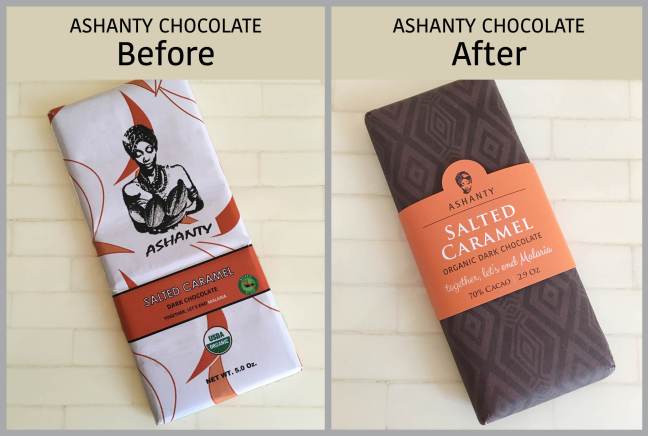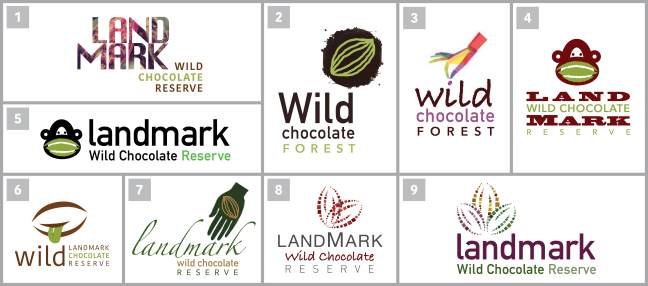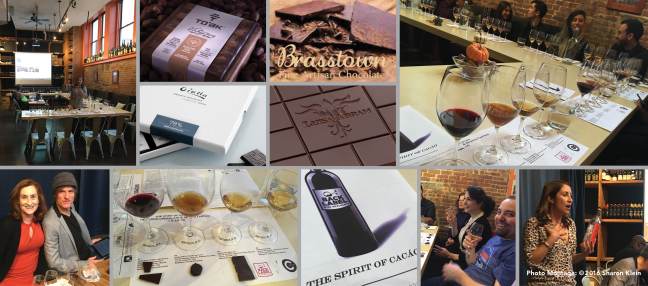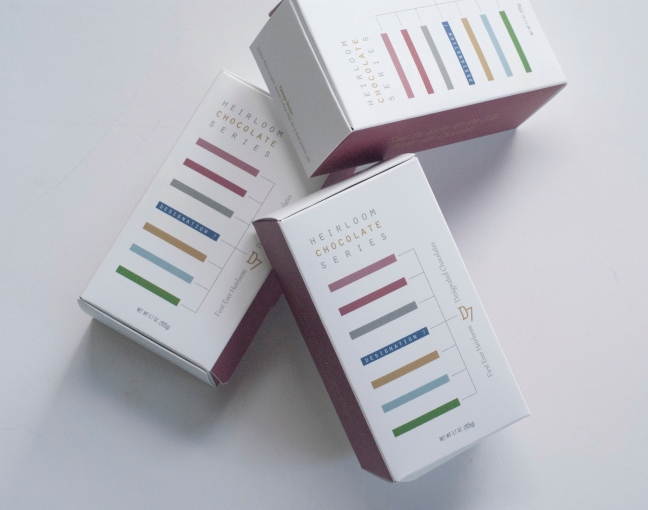
I recently attended my first Underground Chocolate Salon by Megan Giller of Chocolate Noise at Voilà Chocolat. Voilà is a unique experience on the Upper West Side where you can make your own truffles, bars and mendiants, etc. in dark, milk or white chocolate and get creative with toppings.
Megan is a food/chocolate writer I met at the Heirloom Cacao Preservation Fund (HCP) tasting a few months ago. She has fallen in love with chocolate and invited a group of eleven of us to sample some dark chocolates from around the world made with beans from either Peru or the Dominican Republic. She also recommended a book, Chocolate: A Bittersweet Saga of Dark and Light by Mort Rosenblum, which ended up on my tasting notes near the roasted beans and the caramelized cocoa nib.
The interesting part of the evening for me was that numerous attendees photographed my tasting notes, which consisted of two small napkins side by side with scribbles and a bite of each chocolate.
I was told that my set up was unique and very organized. The designer in me always comes out in mysterious ways.
After an hour and a half of laughing, tasting and discussing we unanimously chose:
Chocolarder of Cornwall, England – Asháninka 70% from Ene River Valley, Peru
Confusing name for a terrific bar, lucky for them I don’t care what they are called. You can see in the photo their bar has the ultimate glossy shine to it.
Our unanimous loser was:
Hexx – 70% Marañon Peru, made in Las Vegas
And squarely in the middle:
Valrhona – 70% Noir Andoa Peru, made in France
The other makers were:
Wellington Chocolate Factory – 70% Dominican Republic, made in New Zealand
Maraná – 70% Piura Peru, made in Peru
Cool to compare the lighter color of this bar against the Dominican Republic bars.
Dandelion Chocolate – 70% Zorzal, Dominican Republic, made in San Francisco
Fresco – 72% Dominican Republic, made in Washington State
ChocoMuseo – Caramelized Cocoa Nibs, made in Peru















You must be logged in to post a comment.